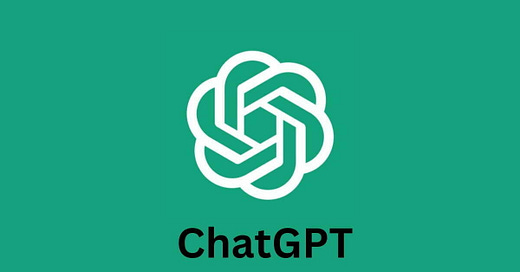AI Tool: ChatGPT
Level: Beginner
Access: Free
This guide is part 1 of the free course Learn how to use ChatGPT.
In this guide, we will cover:
What is ChatGPT?
What is AI and Generative AI?
How was ChatGPT created?
What can you use ChatGPT for?
What is ChatGPT
ChatGPT is a pioneering AI tool developed by OpenAI, a leading AI startup.
It is designed to understand and generate text at a level comparable to human understanding and quality for various tasks.
ChatGPT was the first AI tool of its kind to show the potential of AI in text generation, paving the way for a new era in AI-powered communication.
ChatGPT is part of a broader category of AI tools known as Large Language Models (LLMs), which are specifically designed to understand and generate text.
Other notable examples of LLMs include Claude, Microsoft Copilot, and Google Gemini. These tools have the potential to revolutionise the way we interact with technology, making it more intuitive and human-like.
One of the key features of ChatGPT is its ability to learn from vast amounts of text data, allowing it to generate responses that are relevant and engaging.
This is achieved through a process called deep learning, which involves training artificial neural networks, which are like our brains made of biological neural networks.
These artificial neural networks are trained on large datasets to enable them to learn patterns and relationships in language and text.
Once trained, ChatGPT can be used for many tasks such as content generation, creating engaging copy for social media posts, ad copy, and websites.
It can also assist in coding tasks, providing support to programmers with various coding tasks, and help in research and analysis, summarising research findings and conducting data analysis.
What is AI and Generative AI
AI, or Artificial Intelligence, is a broad field of research that focuses on creating intelligent machines that can perform tasks that typically require human intelligence.
AI is used in various areas of life, including medical imaging, web search, fraud detection, and recommendations on platforms like Amazon, Netflix, and Spotify.
Generative AI, a subset of AI, is a new type of AI technology that has gained significant attention in recent years.
Andrew Ng, former head of Google AI and AI pioneer has one of the best definitions for Generative AI which is:
An AI system that can produce high-quality content such as text, images, and more.
Generative AI is used for a wide range of tasks, including text and image generation, audio and video generation, DNA therapy creation, and 3D modelling and printing.
Generative AI has the potential to transform various industries, from healthcare to entertainment.
For example, generative AI can be used to create personalised medicine, generate realistic images and videos, and even create new forms of art and music.
The possibilities are only just being explored, and the field is rapidly evolving.
How ChatGPT was Created
ChatGPT, like other LLMs, is based on a technology called Large Language Models (LLMs). These models are trained on vast amounts of text data, which allows them to learn patterns and relationships in language.
The process of creating ChatGPT involved several steps:
Data collection: OpenAI collected a massive dataset of text from various sources, including books, articles, and websites.
Data cleaning: The text data was cleaned to remove noise and useless information.
Training: The data was used to train a large neural network AI, which learned to predict the next word in a sequence of text
Fine-tuning: The trained AI was then fine-tuned on specific tasks, such as conversational dialogue and text generation.
The result is a LLM that can generate human-like text responses to a wide range of questions and prompts that can be extremely useful.
What can you use ChatGPT for?
ChatGPT is a handy tool that can be used for a wide range of tasks, including:
Content generation: Creating engaging copy for social media posts, ad copy, and websites.
Coding assistance: Providing support to programmers with various coding tasks.
Research and analysis: Summarising research findings and conducting data analysis.
Language services: Translating languages and explaining complex concepts in simple terms.
AI development: Creating AI chatbots and assistants.
Also, ChatGPT can be used in various industries, such as:
Healthcare: Analysing large amounts of medical data to find patterns and speed up research, creating informative patient education materials, and providing mental health support through AI-powered chatbots.
Real estate: Providing multifaceted support across various stages of property transactions, including instant customer support, virtual tours, and property valuation.
Retail: Enhancing customer support services, providing personalised shopping experiences, and automating customer service tasks.
Education: Providing personalised learning experiences, generating custom study materials, and facilitating interactive learning sessions.
ChatGPT is probably the most widely used AI tool of all.
Next in this course: Things to consider when using ChatGPT




